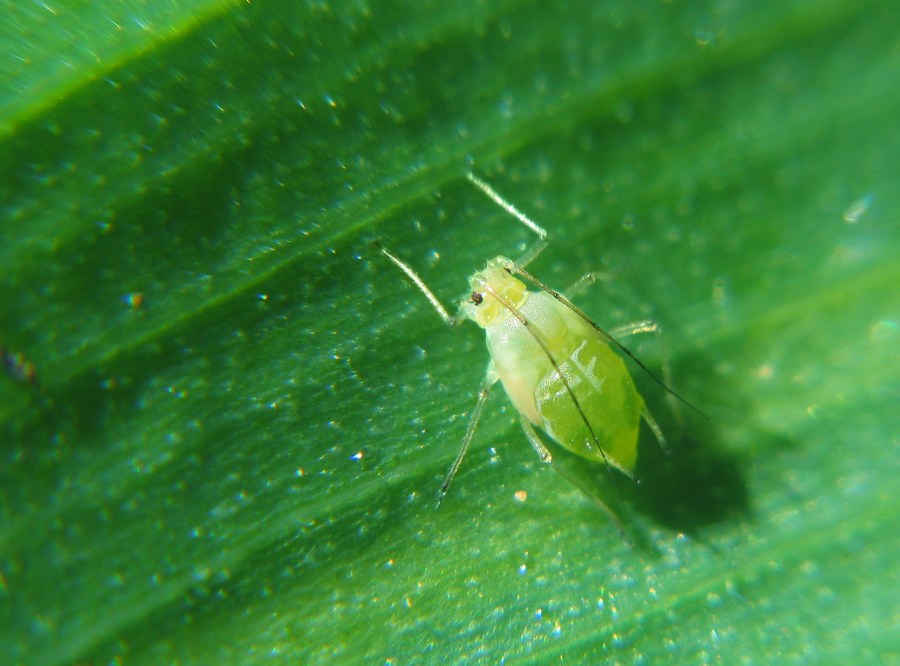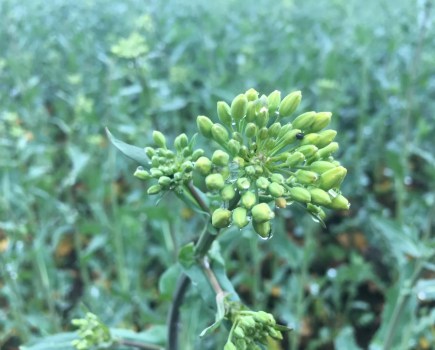Turnip Yellows Virus (TuYV) is becoming an increasing threat to UK oilseed rape crops, so vigilance and swift action over coming weeks will be essential to minimise its impact, according to the latest advice from Bayer. Charlotte Cunningham reports.
The disease, which can reduce yields by 15-30%, is spread by the peach-potato aphid (Myzus persicae) and it’s thought that milder autumn weather, widespread pyrethroid resistance and the loss of neonicotinoid seed treatments are contributing to the growing threat.
“We’ve seen quite high infection rates in recent seasons, particularly in eastern areas, but also elsewhere in the country,” says Suffolk-based Bayer commercial technical manager ,Ella Crawford.
“With many growers in the south-east sowing earlier due to flea beetle, crops are potentially exposed to aphids for longer; the earlier infection occurs, the greater the potential yield loss.
“The fact TuYV-resistant varieties are increasingly performing well, further indicates the disease is becoming more prevalent.”
Rothamsted’s Dr Steve Foster agrees and warns that a high proportion of aphids carry the disease. Monitoring of M. persicae populations at one site in York two years ago found more than 80% of aphids carried TuYV, while at other Scottish sites the disease was present in at least half of aphids collected.
“There’s a lot of TuYV out there, but it can be difficult to diagnose in-field because symptoms are similar to nutrient deficiencies.”
Early action
Waiting for visible crop effects — such as purpling around the edge of leaves — to appear later in autumn is not an option for effective TuYV control, as yield potential will have already been compromised. Instead, growers must act early, says Ella.
“Selecting a resistant variety is a good starting point for integrated control, but the main focus over coming weeks is on controlling aphid vectors in young, vulnerable crops.
“Aphid activity usually peaks in September and October, so monitor crops closely and treat promptly if Myzus persicae starts to build up. Spraying for ‘insurance purposes’ is not an option, so there has to be a genuine need.”
The prevalence of super knock-down resistance to pyrethroids among M. persicae populations effectively rules out this chemistry from the control armoury, adds Steve.
According to Ella, one effective option is the fast-acting systemic insecticide Biscaya (thiacloprid), which can be applied from the two-leaf-unfolded stage of the crop.
“Biscaya offers fast ‘knock-down’ activity and also gives around two weeks persistence in the crop.”
As a neonicotinoid insecticide, only one application is allowed in the autumn (another can be applied in spring for pollen beetle control), so application must be timed carefully, based on aphid risk, she adds.
For best results, keep to the recommended label rate of 0.3 litre/ha and water volume of 200-400 litre/ha.
Steve says that while there is currently no evidence of control issues with thiacloprid in the UK, neonicotinoid resistance has been found in M. persicae populations on the continent, so products must be used carefully as part of an integrated strategy.
“We’re in a worrying situation where we’re losing more and more actives to resistance and legislation, so we need to protect those that remain. Employing other Integrated Pest Management (IPM) controls is an increasingly important part of this.”
IPM tips for TuYV control:
- Grow a resistant variety
- Encourage beneficial insects (e.g. parasitoids and hoverflies)
- Monitor aphid risk – use AHDB alerts and regular field walking
- Treat crops with Biscaya when necessary
- Abide by label recommendations
For more information, visit: cropscience.bayer.co.uk/tuyv




